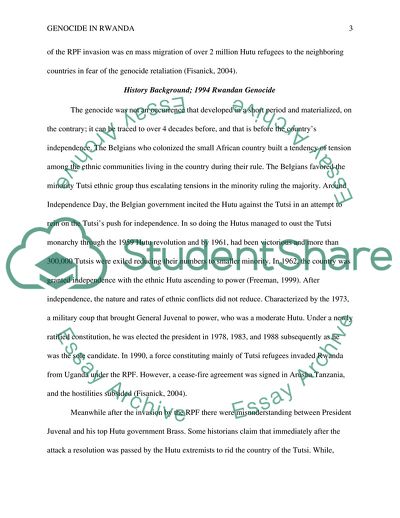Cite this document
(1994 Rwandan Genocide and Reconciliation Process Coursework Example | Topics and Well Written Essays - 2250 words, n.d.)
1994 Rwandan Genocide and Reconciliation Process Coursework Example | Topics and Well Written Essays - 2250 words. https://studentshare.org/politics/1831987-after-1994-rwandan-genocide-reconciliation-process
1994 Rwandan Genocide and Reconciliation Process Coursework Example | Topics and Well Written Essays - 2250 words. https://studentshare.org/politics/1831987-after-1994-rwandan-genocide-reconciliation-process
(1994 Rwandan Genocide and Reconciliation Process Coursework Example | Topics and Well Written Essays - 2250 Words)
1994 Rwandan Genocide and Reconciliation Process Coursework Example | Topics and Well Written Essays - 2250 Words. https://studentshare.org/politics/1831987-after-1994-rwandan-genocide-reconciliation-process.
1994 Rwandan Genocide and Reconciliation Process Coursework Example | Topics and Well Written Essays - 2250 Words. https://studentshare.org/politics/1831987-after-1994-rwandan-genocide-reconciliation-process.
“1994 Rwandan Genocide and Reconciliation Process Coursework Example | Topics and Well Written Essays - 2250 Words”. https://studentshare.org/politics/1831987-after-1994-rwandan-genocide-reconciliation-process.


